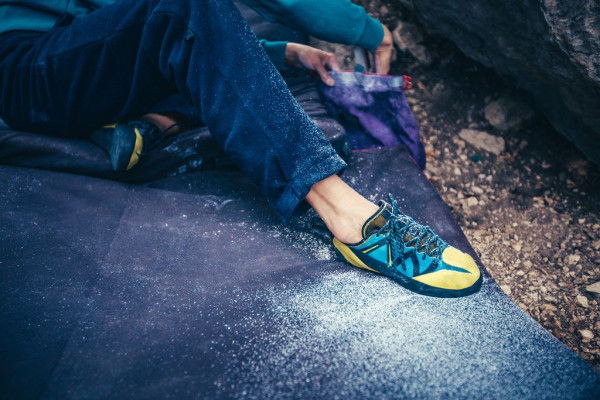
Beginner Rock Climbing Shoes
You have to examine 6 property.
1. FIT
The most important consideration when choosing the best beginner climbing shoe is fit. Every person’s foot shape is different. The shape, width, volume and heel depth of your foot can all affect how comfortable you are in your new kicks. The only way to find the perfect shoe is to try on as many models as possible. Your shoe should fit snug and comfortable, with no dead spaces, hot spots, or painful areas.
2. DOWNSIZING
You’ve probably heard other climbers discussing downsizing from their street shoe size and complaining of cramped and bent toes. Downsizing helps to keep your feet immobilized in your shoes. A lack of wiggle room can increase precision and power needed for finessing those tiny foot edges or pulling hard with that heel hook, but in the beginning it’s more important to feel comfortable. Later you can get smaller size shoes, when you are going on the hard projects. Be careful with sizes, you can get different sizes in one brand too. For example, if you have a 5.10 Anasazi VCS and you want to get a pair of new Blackwing, you should look for 1.5 size bigger.
3. STRETCH
To complicate things, some climbing shoes stretch, but others don’t. Once you’ve downsized from your street shoes to a comfortable, snug fit, you need to know whether your shoes will bag out or not. The length of your climbing shoe from heel to toe will never change. But, a shoe with an unlined leather upper can stretch up to 1.5 sizes after being broken in. A shoe with a synthetic lining will remain comparable to how it felt right out of the box. While some people prefer wearing their shoes with a light sock, climbing shoes are designed for bare feet. Beginner shoes can stretch 0.5-1.5 size, a professional model usually maximum 0.5 size.
4. MEN’S VS WOMEN’S
Several climbing shoe models have a “sister shoe” which has been tweaked to better suit some women’s feet. Besides being your source for pink or purple climbing footwear, these shoes tend to be lower volume and often slightly narrower. Learn about the shape of your own foot – many dudes with low volume feet swear by these models too.
5. SHOE SHAPE
Every shoe we’ve suggested in this article is flat lasted. Flat last shoes are comfortable and easy to wear all day with little suffering. When you’re first starting, it’s a good idea to rule out the powerful shape of a hooked downturned shoe. Technically aggressive, high-performance shoes will come in useful with more experience, when you’re ready to expand your climbing style.
6. VELCRO VS. LACE-UP
There are two main ways to tighten climbing shoes – velcro or laces. Velcro shoes are easier to take on and off. Some tighten just as well as their lace-up counterparts. Velcro shoes are great for bouldering, gym or sport climbing because you’ll be switching from your regular shoes to your climbing shoes often. Laces-up shoes are more adjustable, this allows you to get the tightness exactly how you like it but it’s slower to put on and take off. Ok but what should i choose? We give you a little help.
You can do well with this 10 shoes:
- Butora Narsha
- Scarpa Instinct VS
- Scarpa Origin
- La Sportiva Tarantula
- La Sportiva Finale
- Evolv Defy
- Evolv Elektra
- Ocun Strike QC
- Five Ten Anasazi
- Unparallel Engage
Let’s try them all.